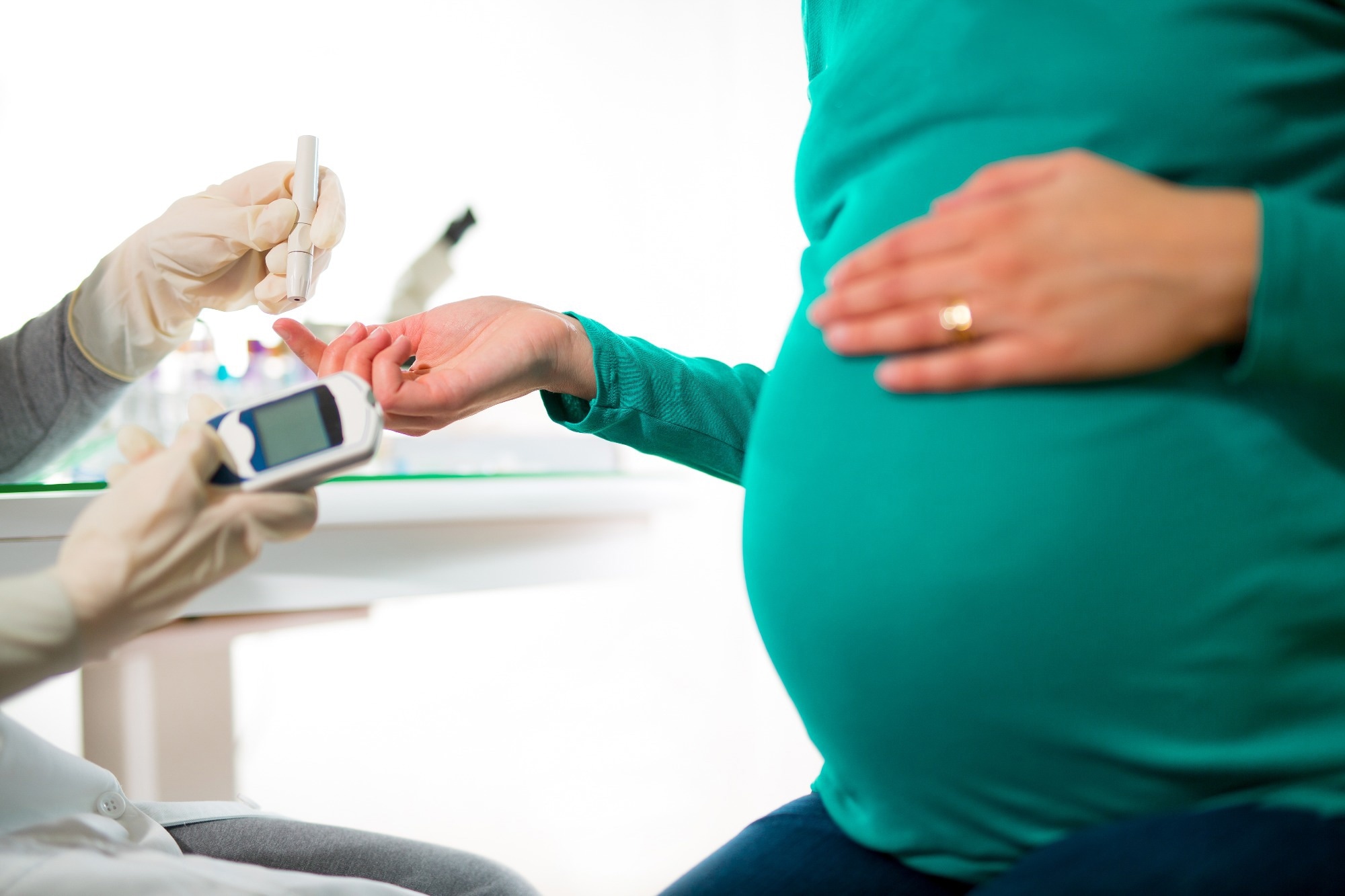In a recent study published in Nature Cardiovascular Research, researchers from California used multimodal single-cell analysis in mice to investigate the mechanisms by which maternal diabetes mellitus contributes to congenital abnormalities in the fetus.
They found that during embryogenesis, maternal diabetes alters the epigenomic landscape in cardiac and craniofacial progenitors, leading to developmental defects.
 Study: Single-cell multimodal analyses reveal epigenomic and transcriptomic basis for birth defects in maternal diabetes. Image Credit: adriaticfoto/Shutterstock.com
Study: Single-cell multimodal analyses reveal epigenomic and transcriptomic basis for birth defects in maternal diabetes. Image Credit: adriaticfoto/Shutterstock.com
Background
Cardiac and craniofacial congenital disabilities often co-occur due to shared progenitors and reciprocal signaling between these cells. Several genetic and environmental factors can influence congenital disabilities in the offspring.
Pregestational diabetes mellitus (PGDM) is one such factor associated with a five-fold elevation in the incidence of these defects. Similarly, retinoic acid (RA) exposure can adversely impact heart and craniofacial regions.
Although the mechanisms linking hyperglycemia to congenital disabilities are not fully understood, oxidative stress and metabolite alterations leading to epigenomic changes are implicated.
To address this question, researchers in the present study employed single-cell analysis during mouse development to study cell-specific epigenomic alterations and the potential mechanisms leading to congenital disabilities associated with maternal diabetes.
About the study
The present study used the following mouse strains: C57BL/6J wild-type, RARE–hsp68LacZ, and B6.Cg–Gt(ROSA)26Sortm6(CAG–ZsGreen1)Hze/J (Ai6), Mef2c–AHF–Cre, and Alx3–Cre. To understand how PGDM affects embryonic cardio-pharyngeal development, diabetes mellitus was induced in female mice using intraperitoneally delivered streptozotocin (STZ) for five days.
Hyperglycemic females (>250 mg/dl) were mated with untreated males, and the resulting embryos were extracted on embryonic day 10.5. Vehicle (VEH)-treated mice were used as controls. Heart morphology was imaged using micro-computed tomography.
Further, single-cell RNA sequencing (scRNA-seq) and single-cell sequencing assay for transposase-accessible chromatin (scATAC-seq) were conducted on the cardio-pharyngeal regions of the dissected embryos.
Peak calling was performed for each scATAC-seq cluster, and differentially accessible chromatin regions (DARs) were identified. Various bioinformatics tools were used at different stages of the analysis, including but not limited to Seurat, weighted gene co-expression network analysis (WGCNA), Cell Ranger, and ArchR.
Additionally, in situ hybridization experiments, luciferase assay, and X-gal staining were performed on the tissues. None of the samples were excluded in the statistical analysis, and three independent embryos were analyzed in the gene expression experiments.
Results
Compared to controls, embryos from STZ-treated mice showed an increased frequency of defects in the conotruncal ventricular septum, atrial septum, outflow tract (OFT), neural tube, skull, and face. scATAC-seq analysis suggests that PGDM affects cell populations' distribution in cardiac and craniofacial defects.
A significant increase was observed in the number of cardio-pharyngeal mesodermal progenitors, along with a decrease in the neural crest derivatives and differentiated cardiomyocytes. A total of 4,324 DARs were identified, majorly in the mesodermal cardio-pharyngeal progenitors (48.8%) and neural crest-derived cells (48.5%).
The results suggest that PGDM induces cell-specific changes in embryonic chromatin accessibility. Transcriptomic and epigenomic alterations were observed in pharyngeal arch 2 (PA2) and Six2-high PA4/PA6 cells, indicating a less-differentiated status.
Further, multimodal analysis of neural crest cells at single-cell resolution showed that a relatively undifferentiated subset of PA2 neural crest cells is modified epigenetically by PGDM. This results in transcriptional dysregulation of the genes associated with patterning, cell migration, and cellular differentiation.
Examination of regulatory elements within these specific cell types revealed the dysregulation of RA signaling and downstream homeobox (Hox) genes in AHF2 (short for anterior heart field 2) and PA2. This aberrant RA activity led to the dysregulation of patterning and the loss of cell-specific transcription signatures.
Additionally, maternal diabetes was found to induce epigenomic changes. It increased “posteriorization” in cardiac progenitors expressing a protein named Alx3 (short for aristaless-like homeobox 3), particularly in the newly identified subset AHF2, affecting anterior-posterior (A-P) patterning.
As per the study, Alx3-positive AHF2 cells contribute to specific defects in the OFT region and atrium. Under hyperglycemic conditions, AHF2 cells transition towards a skeletal-like state with increased Hoxb1 (homeobox B1 gene) expression, suggesting a potential mechanism for abnormal A–P patterning in cardiac development.
Conclusion
In conclusion, the study shows that although all the embryonic cells experience a similar environmental exposure in the form of PGDM and associated hyperglycemia, only a small subset of cells show epigenomic vulnerability, potentially explaining the offspring's craniofacial and cardiac congenital disabilities.
It demonstrates the utility of single-cell multimodal analysis as a tool to investigate the impact of environmental factors on embryonic development. Further research must be conducted to determine why only certain cell types show heightened sensitivity to environmental influence compared to others.
Additionally, given the rise of the global incidence of PGDM, it would be important to investigate further the mechanisms underlying the epigenomic and transcriptomic changes associated with the condition to aid the implementation of potential therapeutic approaches during fetal development.